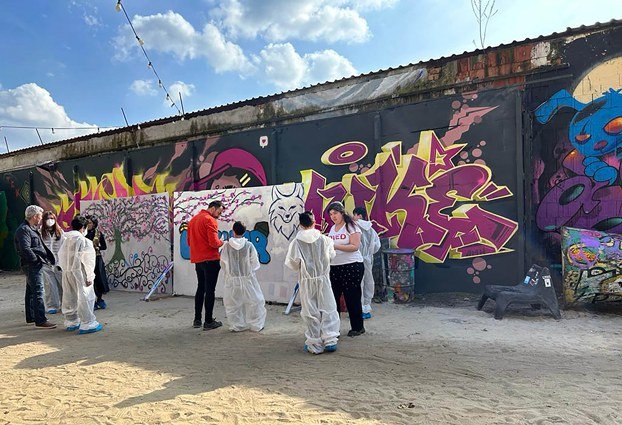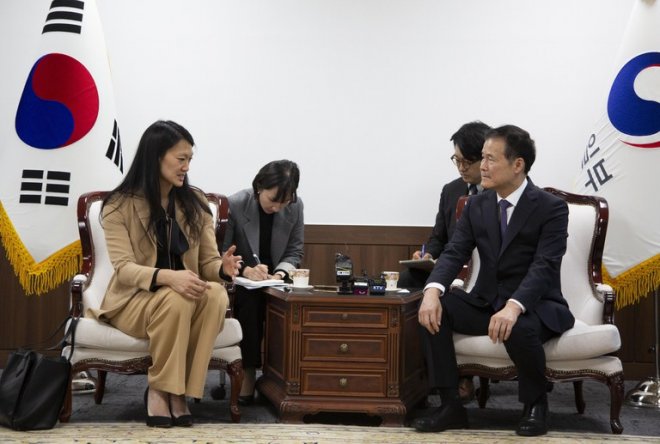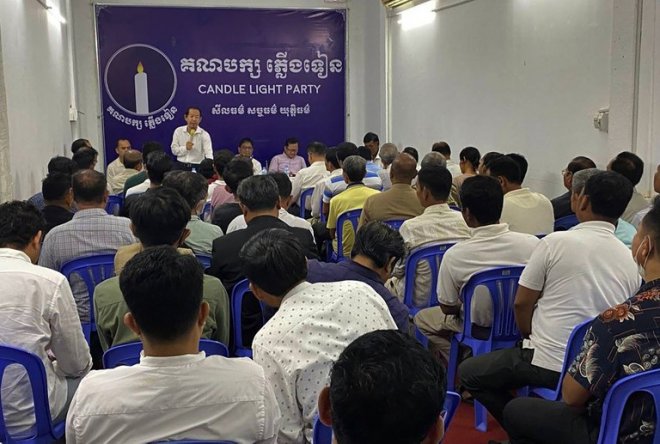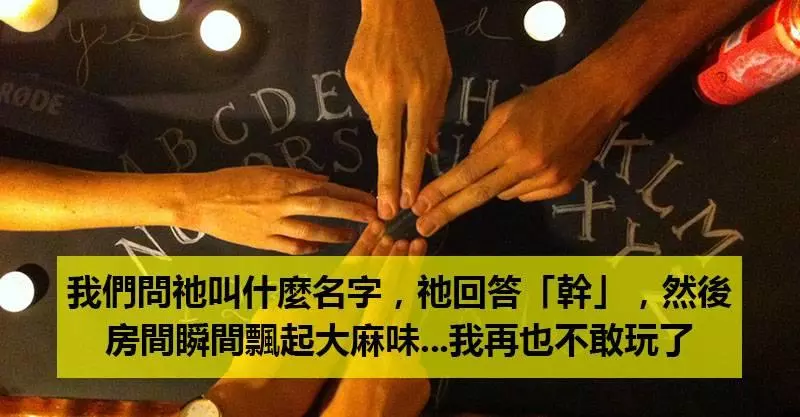In ancient murals and cave temple, Uyghur youths learn about their history in Berlin
The group of Uyghur students stood in awe of the ancient murals with Persian and Indian influences, fragments of text and other artistic objects from caves in northwestern China’s Xinjiang region.With heads tilted upwards, the youths, aged 10-15, took in a reconstruction of a Buddhist cave temple dating from around the sixth century and spanning two levels of the gallery. The murals adorned the walls of Cave of the Ring-bearing Doves in Kizil, near Kucha, on the Northern Silk Road in what is now the Xinjiang Uyghur Autonomous Region.
But they were not seeing the cave art or temple in their original locations. They were viewing them more than 4,800 kilometers (3,000 miles) away at the Humboldt Forum, a Berlin museum dedicated to human history, art and culture.
The wall paintings, whose once vivid colors have dulled with age, and other artifacts depicting both Buddhist legends and secular themes, are part of the history of ancient Xinjiang.
“We saw our motherland’s artifacts, such as ancient carpets and clothes,” Kamil, a Belgian-Uyghur participant, told Radio Free Asia. “I never thought that we had things in Europe. I felt proud when a gentleman told us the story about them and our ancestors.”
Kamil was one of the 26 Uyghur kids participating in a four-day trip to the German capital organized by the research center of the World Uyghur Congress, an advocacy group headquartered in Munich.
The youngsters, who study at Uyghur-language schools in seven European countries, were learning about their history and culture through artifacts taken from their historic homeland by a German expedition team that made four trips to Xinjiang in the early 20th century, and are now kept in Berlin museums.
‘Returning to the Past’
The educational program called “Returning to the Past” was the first gathering of its kind for Uyghur teenagers in Europe to get together and learn about their heritage at a time when the Chinese government has been eradicate Uyghur culture in Xinjiang in an effort to Sinicize the restive region.
“Mr. Ablet explained to us the value of artifacts carted to Germany from our homeland exhibited in the museum,” said Atikem, a teacher at a Uyghur-language school in England, who brought six students to the event. She was referring to a Uyghur historian who is an expert on the artifacts displayed in the museum and who served as a guide for the group.
 Uyghur children paint banners next to a remnant of the Berlin Wall in Germany"s capital Berlin, April 10, 2023. Credit: Semet Abla
Uyghur children paint banners next to a remnant of the Berlin Wall in Germany"s capital Berlin, April 10, 2023. Credit: Semet Abla
WUC program organizers sought to impart two lessons during the program: rebuilding destroyed cities and remaining strong as a persecuted people.
On the first day of the program, instructors introduced Berlin to the participants, said Abduweli Ayup, director of the WUC’s Research Center and an event organizer.
They drew parallels between the destruction of the city during World War II and the demolition in recent years of parts of ancient Uyghur cities by the Chinese government, including mosques, cemeteries, old towns and marketplaces.
“At the beginning of the program, we explained to them that Berlin was destroyed during WWII, and similarly, Uyghur cities, Uyghur symbols and cultural relics are facing destruction now,” Ayup said.
“Just like the German people rebuilt Berlin, we need to rebuild Uyghur cities in the future, so we should get inspiration from the rebuilding of Berlin,” he said.
Parallels
The program also drew parallels between the genocide of the Jews during the war and the genocide of the Uyghurs beginning in 2017, when Chinese authorities began detaining members of the mostly Muslim minority group in “re-education” camps and prisons where some were subjected to torture, sexual assaults, and forced labor.
The U.S. government, the European Parliament and the legislatures of several Western countries have declared that the maltreatment amounts to genocide and crimes against humanity.
During a visit to the Memorial to the Murdered Jews of Europe, organizers highlighted the ongoing Uyghur genocide to the young people and expressed hope that Uyghurs would stand up to China one day just as did the Jews, Ayup said.
“By showing them the museum that depicts the history of Jewish people’s fight for liberty, we tried to explain to the teenagers how a nation of genocidal victims can rise and the possibility to rise,” he later told RFA.
In one discussion exercise, some participants compared the genocide of the Jews to the genocide of Uyghurs in Xinjiang.
“I never thought they could make such comparisons,” Atikem said. “They told me that the Nazi government made Jewish people poor first and locked them in ghettos. They compared the Nazis’ behavior to that of the Chinese [who] locked up Uyghurs.”
“The Jewish people stayed as one family in those ghettos and survived that oppression through family support,” the teacher said. “The Chinese separated kids from their parents and brought mental anguish to all of them. These kids said that to me.”
“They missed their Uyghur identity, I think,” she said. “I also thought they longed for their people, culture and the opportunity to live as Uyghurs.”
Translated by RFA Uyghur. Edited by Roseanne Gerin and Malcolm Foster.
[圖擷取自網路,如有疑問請私訊]
|
本篇 |
不想錯過? 請追蹤FB專頁! |
| 喜歡這篇嗎?快分享吧! |
相關文章
AsianNewsCast























